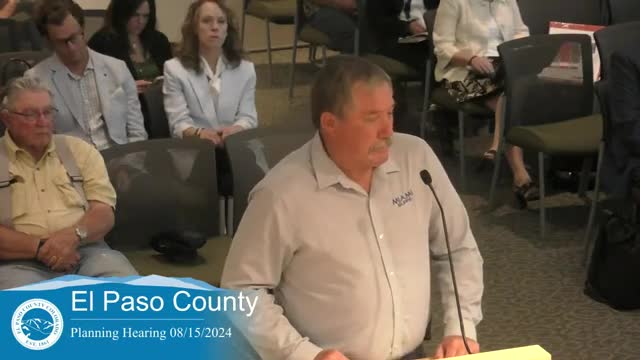Community Divided Over Controversial Trade School Development
August 15, 2024 | El Paso County, Colorado

This article was created by AI summarizing key points discussed. AI makes mistakes, so for full details and context, please refer to the video of the full meeting. Please report any errors so we can fix them. Report an error »

In a recent government meeting, discussions centered around a proposed development project that includes a trade school and residential housing in El Paso County. The project aims to establish a central facility for career and technical education (CTE) programs, which proponents argue is essential for preparing students for the workforce. The facility is expected to serve students from various high schools in the Colorado Springs area, with plans to send students to Pikes Peak State College for hands-on training in fields such as heavy equipment operation.
Supporters of the project highlighted the importance of a centralized location for students, emphasizing that many would otherwise face significant travel distances to access necessary training. They argued that the proposed site is ideally situated to serve a broad range of students from surrounding areas.
However, the proposal faced opposition from local residents who raised concerns about the impact of the development on property values, noise levels, and the overall character of the rural community. Tom Elliott, a nearby property owner, expressed worries about the potential decrease in property values and the noise generated by outdoor activities associated with the trade school. He also questioned the adequacy of water resources for the proposed development, which includes plans for 121 homes.
Andrew Townsend, another local resident, echoed these concerns, arguing that the density of the proposed housing does not align with the existing zoning for large lot residential areas. He suggested that the project would disrupt the rural aesthetic of the neighborhood and questioned the suitability of the location for a trade school, advocating for a more central site that would better serve the intended student population.
In response to the concerns raised, representatives of the development team clarified that the project would utilize a central water system and would not include sewage facilities on-site. They emphasized that the design of the development includes significant open space and is intended to minimize the impact on neighboring properties.
The meeting concluded with a commitment to further evaluate the proposal, taking into account the diverse perspectives shared by community members. As the project moves forward, it will be crucial for stakeholders to address the concerns of local residents while balancing the need for enhanced educational opportunities in the region.
Supporters of the project highlighted the importance of a centralized location for students, emphasizing that many would otherwise face significant travel distances to access necessary training. They argued that the proposed site is ideally situated to serve a broad range of students from surrounding areas.
However, the proposal faced opposition from local residents who raised concerns about the impact of the development on property values, noise levels, and the overall character of the rural community. Tom Elliott, a nearby property owner, expressed worries about the potential decrease in property values and the noise generated by outdoor activities associated with the trade school. He also questioned the adequacy of water resources for the proposed development, which includes plans for 121 homes.
Andrew Townsend, another local resident, echoed these concerns, arguing that the density of the proposed housing does not align with the existing zoning for large lot residential areas. He suggested that the project would disrupt the rural aesthetic of the neighborhood and questioned the suitability of the location for a trade school, advocating for a more central site that would better serve the intended student population.
In response to the concerns raised, representatives of the development team clarified that the project would utilize a central water system and would not include sewage facilities on-site. They emphasized that the design of the development includes significant open space and is intended to minimize the impact on neighboring properties.
The meeting concluded with a commitment to further evaluate the proposal, taking into account the diverse perspectives shared by community members. As the project moves forward, it will be crucial for stakeholders to address the concerns of local residents while balancing the need for enhanced educational opportunities in the region.
View full meeting
This article is based on a recent meeting—watch the full video and explore the complete transcript for deeper insights into the discussion.
View full meeting
